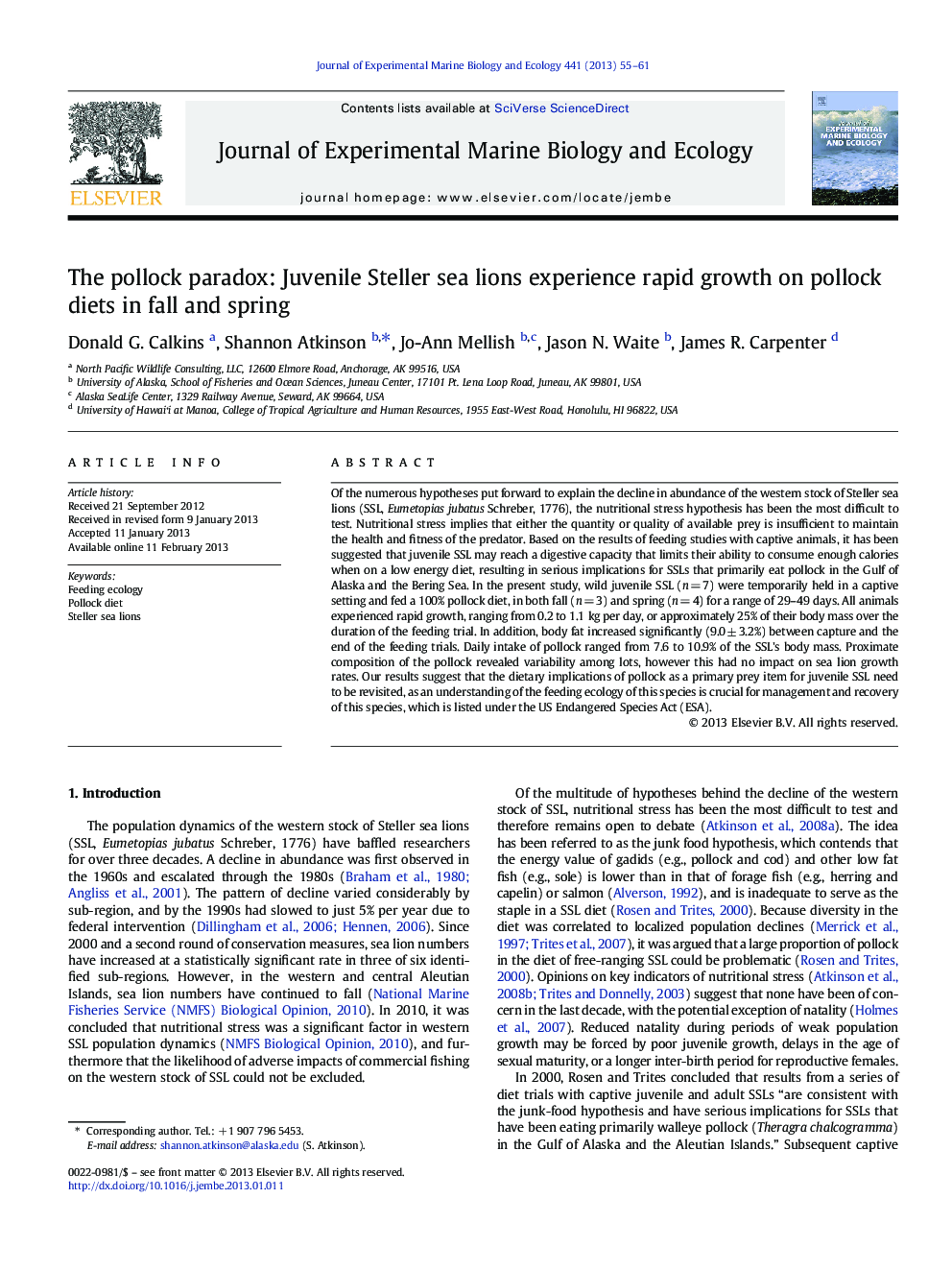| کد مقاله | کد نشریه | سال انتشار | مقاله انگلیسی | نسخه تمام متن |
|---|---|---|---|---|
| 4395753 | 1618434 | 2013 | 7 صفحه PDF | دانلود رایگان |

Of the numerous hypotheses put forward to explain the decline in abundance of the western stock of Steller sea lions (SSL, Eumetopias jubatus Schreber, 1776), the nutritional stress hypothesis has been the most difficult to test. Nutritional stress implies that either the quantity or quality of available prey is insufficient to maintain the health and fitness of the predator. Based on the results of feeding studies with captive animals, it has been suggested that juvenile SSL may reach a digestive capacity that limits their ability to consume enough calories when on a low energy diet, resulting in serious implications for SSLs that primarily eat pollock in the Gulf of Alaska and the Bering Sea. In the present study, wild juvenile SSL (n = 7) were temporarily held in a captive setting and fed a 100% pollock diet, in both fall (n = 3) and spring (n = 4) for a range of 29–49 days. All animals experienced rapid growth, ranging from 0.2 to 1.1 kg per day, or approximately 25% of their body mass over the duration of the feeding trial. In addition, body fat increased significantly (9.0 ± 3.2%) between capture and the end of the feeding trials. Daily intake of pollock ranged from 7.6 to 10.9% of the SSL's body mass. Proximate composition of the pollock revealed variability among lots, however this had no impact on sea lion growth rates. Our results suggest that the dietary implications of pollock as a primary prey item for juvenile SSL need to be revisited, as an understanding of the feeding ecology of this species is crucial for management and recovery of this species, which is listed under the US Endangered Species Act (ESA).
► Predatory potential of Hemigrapsus sanguineus has been demonstrated.
► Displacement of native crab species by H. sanguineus has been heavily studied.
► Larval settlement and metamorphosis have received considerable attention.
► Larval swimming behavior and transport are poorly understood.
► Community-level and economic effects are not well demonstrated.
Journal: Journal of Experimental Marine Biology and Ecology - Volume 441, March 2013, Pages 55–61